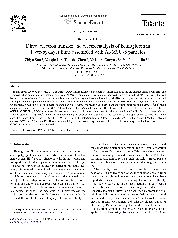摘要
In this paper, layer-by-layer (LBL) {MSU/Hb}(n)/PDDA films assembled by alternate adsorption of positively charged hemoglobin (Hb) and negatively charged mesoporous molecular sieves of Al-MSU-S onto a glassy carbon electrode (GCE) were reported. Al-MSU-S was synthesized by the precursor of zeolite Y and ionic liquids 1-hexadecane-3-methylimidazolium bromide (CMIMB) as a template in basic medium. It exhibited larger pore diameter, pore volume and surface area. Direct electrochemical and electrocatalytic properties of Hb in these layer-by-layer films were investigated. A pair of well-defined nearly reversible cyclic voltammetric peaks was observed and the formal potential of the heme Fe-III/Fe-II redox couple was found to be -0.295 V (vs. SCE). The influences of layer's number and the pH of the external solution to the electron transfer behavior of Hb in {MSU/Hb}(n)/PDDA films were also estimated by cyclic voltarnmetry and a set of optimized conditions for film fabrication was inferred. The hemoglobin in {MSU/Hb}(n)/PDDA films displayed a good electrocatalytic activity to the reduction of hydrogen peroxide, which had linear current responses from 1.0 X 10(-6) to 1.86 x 10(-4) mol/L with the detection limit of 5.0 x 10(-7) mol/L (SIN = 3). The apparent Michaeli-Menten constant (K-m(app)) was 0.368 mmol/L. Thus, this methodology shows potential application of the preparation of third-generation biosensors.
- 出版日期2008-2-15
- 单位华东师范大学
